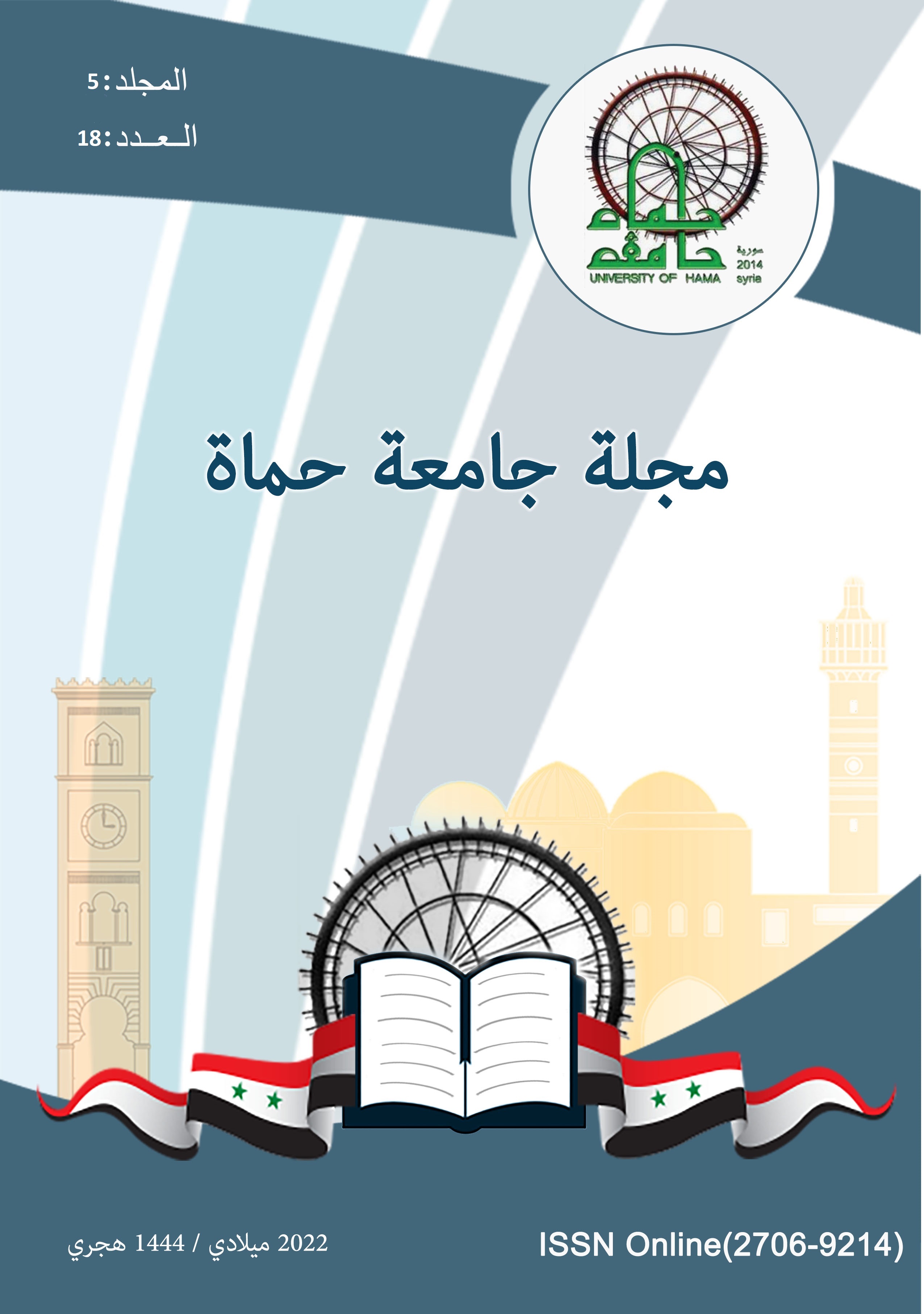تقييم معرفة وسلوك اختصاصيي مداواة الأسنان اللبية والممارسين العامين في سورية تجاه معالجات اللب الحي (بتر اللب التاجي ) في الأسنان الدائمة
الملخص
Recently, interest has focused on preserving the dental pulp as much as possible through Vital Pulp Therapeutique Techniques , which rely on maintaining the vitality and function of the pulp tissue in vital permanent teeth. This research aims to explore the opinions and behavior of general practitioners and Endodontists in Syria regarding vital pulpotomy in permanent teeth, and the materials used in this Procedure. The sample consisted 472 endodontists and general practitioner dentists in Syria. The questionnaire consisted of 7 questions about coronal pulpotomy in permanent teeth. The results showed that 73.6% of the participants had prior knowledge of the coronal pulpotomy procedure. 69% of the participants had performed a pulpotomy MTA was the most widely used substance by the participants with a percentage of 37%, and the main reason for 89.2% that prompted practitioners to perform a coronal pulpotomy was pulp exposures that were not accompanied by symptoms of spontaneous pain. Most of the participants promised this procedure a phased procedure by 73%, and the greatest fear was necrotizing The remaining pulp after pulpotomy 72%
The data was analyzed after being collected from the participants using chi-square analysis at a significance level of 0.05 .
References
2. Akhlaghi, N. and A. Khademi (2015). "Outcomes of vital pulp therapy in permanent teeth with different medicaments based on review of the literature." Dental research journal 12(5): 406.
3. Alqaderi, H. E., S. A. Al-Mutawa and M. A. Qudeimat (2014). "MTA pulpotomy as an alternative to root canal treatment in children's permanent teeth in a dental public health setting." Journal of dentistry 42(11): 1390-1395.
4. Asgary, S., M. Fazlyab, S. Sabbagh and M. J. Eghbal (2014). "Outcomes of different vital pulp therapy techniques on symptomatic permanent teeth: a case series." Iran Endod J 9(4): 295-300.
5. Basmadjian-Charles, C., P. Farge, D. Bourgeois and T. Lebrun (2002). "Factors influencing the long-term results of endodontic treatment: a review of the literature." International Dental Journal 52(2): 81-86.
6. Brizuela, C., A. Ormeño, C. Cabrera, R. Cabezas, C. I. Silva, V. Ramírez and M. Mercade (2017). "Direct Pulp Capping with Calcium Hydroxide, Mineral Trioxide Aggregate, and Biodentine in Permanent Young Teeth with Caries: A Randomized Clinical Trial." J Endod 43(11): 1776-1780.
7. Chin, J., M. Thomas, M. Locke and P. Dummer (2016). "A survey of dental practitioners in Wales to evaluate the management of deep carious lesions with vital pulp therapy in permanent teeth." British Dental Journal 221(6): 331-338.
8. Chisini, L. A., M. C. M. Conde, M. B. Correa, R. V. F. Dantas, A. F. Silva, F. G. Pappen and F. F. Demarco (2015). "Vital pulp therapies in clinical practice: findings from a survey with dentist in Southern Brazil." Brazilian dental journal 26: 566-571.
9. Dammaschke, T., A. Nowicka, M. Lipski and D. Ricucci (2019). "Histological evaluation of hard tissue formation after direct pulp capping with a fast-setting mineral trioxide aggregate (RetroMTA) in humans." Clinical oral investigations 23(12): 4289-4299.
10. Endodontists, A. A. o. (2003). Glossary of endodontic terms, American Association of Endodontists.
11. Morotomi, T., A. Washio and C. Kitamura (2019). "Current and future options for dental pulp therapy." Jpn Dent Sci Rev 55(1): 5-11.
12. Parirokh, M. and M. Torabinejad (2010). "Mineral trioxide aggregate: a comprehensive literature review--Part I: chemical, physical, and antibacterial properties." J Endod 36(1): 16-27.
13. Rajasekharan, S., L. C. Martens, R. Cauwels and R. P. Anthonappa (2018). "Biodentine™ material characteristics and clinical applications: a 3 year literature review and update." Eur Arch Paediatr Dent 19(1): 1-22.
14. Ricucci, D., S. Loghin and J. F. Siqueira, Jr. (2014). "Correlation between clinical and histologic pulp diagnoses." J Endod 40(12): 1932-1939.
15. Schmalz, G. and A. J. Smith (2014). "Pulp development, repair, and regeneration: challenges of
16. the transition from traditional dentistry to biologically based therapies." J Endod 40(4 Suppl): S2-5.
17. Simon, S., M. Perard, M. Zanini, A. J. Smith, E. Charpentier, S. X. Djole and P. J. Lumley (2013). "Should pulp chamber pulpotomy be seen as a permanent treatment? Some preliminary thoughts." Int Endod J 46(1): 79-87.
18. Stangvaltaite, L., F. Schwendicke, C. Holmgren, M. Finet, M. Maltz, K. Elhennawy, E. Kerosuo and S. Doméjean (2017). "Management of pulps exposed during carious tissue removal in adults: a multi-national questionnaire-based survey." Clinical Oral Investigations 21(7): 2303-2309.
19. Taha, N. A. and M. A. Khazali (2017). "Partial Pulpotomy in Mature Permanent Teeth with Clinical Signs Indicative of Irreversible Pulpitis: A Randomized Clinical Trial." J Endod 43(9): 1417-1421.
20. Vargas, K. G., A. B. Fuks and B. Peretz (2016). Pulpotomy techniques: cervical (traditional) and partial. Pediatric Endodontics, Springer: 51-70.
21. Fink A (1995) How to Ask Survey Questions. London: SAGE publications Ltd.


